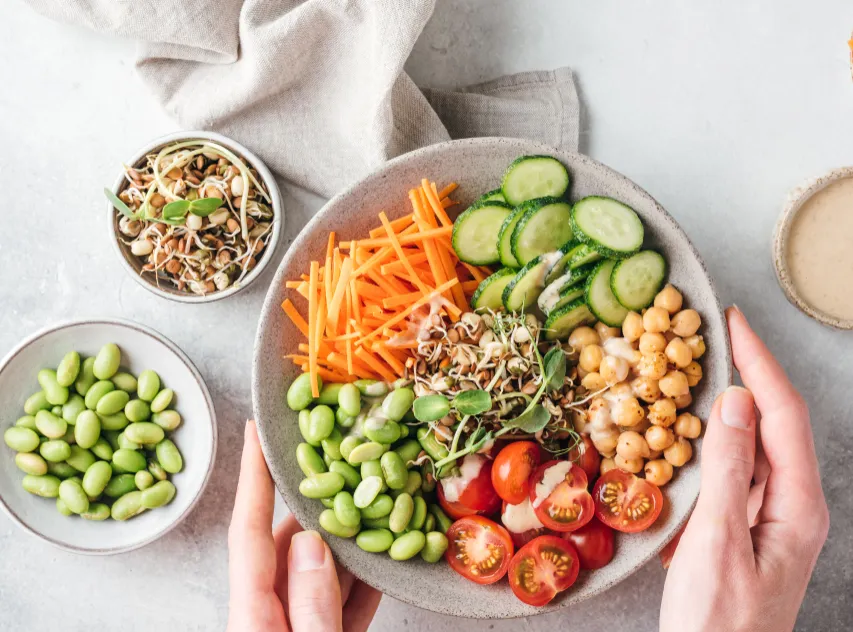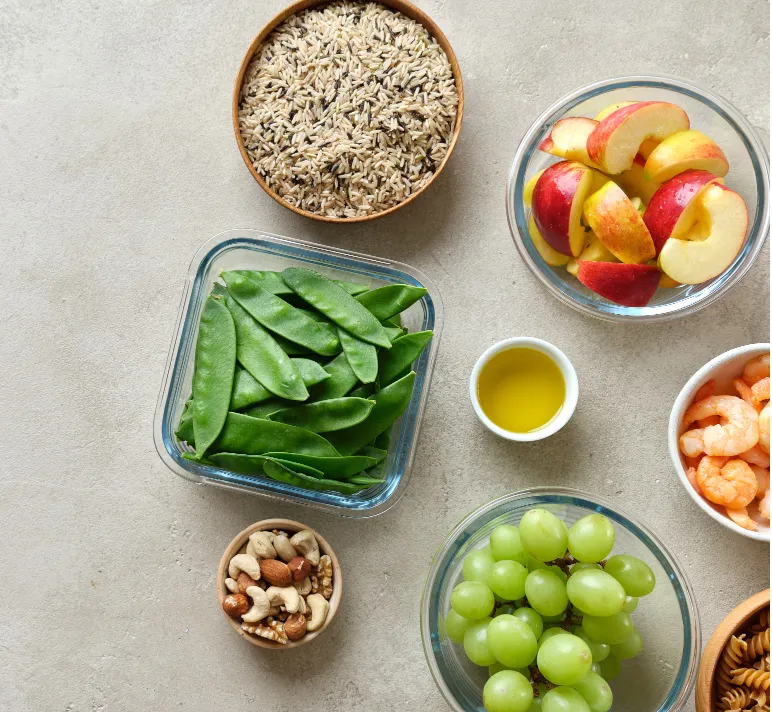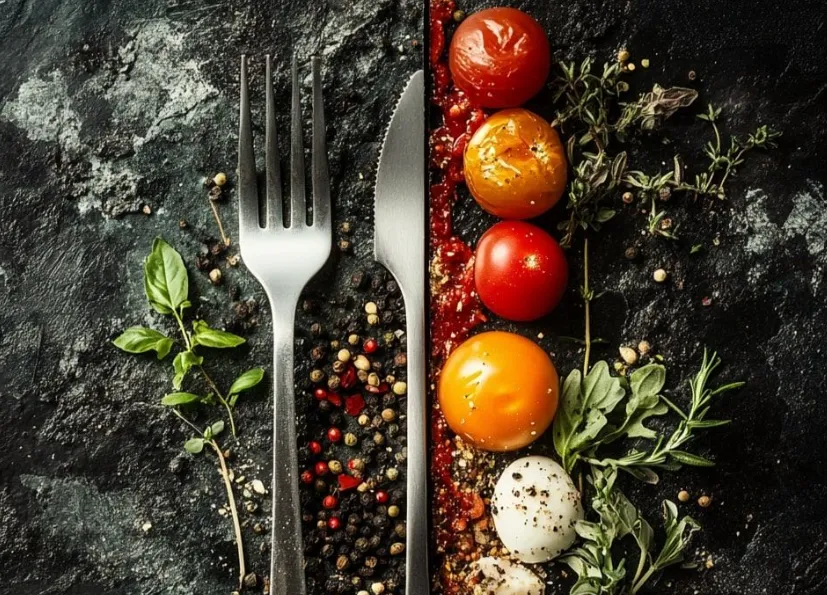Intermittent Fasting Meal Plans: Benefits, Methods, and Sample Menus
Intermittent Fasting Meal Plans. The 16/8 method of intermittent fasting is a time-restricted eating pattern where you fast for 16 hours and confine your eating to an 8-hour window each day. During the fasting hours, only water, black coffee, or other calorie-free beverages are allowed. This fasting approach allows you to consume all your meals within a limited timeframe while fasting for the rest of the day, making it an easier method compared to other types of intermittent fasting.
The primary goal is to let your body exhaust its stored glucose (sugar) and begin burning fat for energy, which can lead to weight loss. Alongside weight loss, there are several benefits of intermittent fasting 16/8, including better blood sugar control, improved metabolism, and even potential longevity.

Intermittent fasting has emerged as one of the most popular eating patterns, focusing not on what you eat but when you eat. Unlike traditional diets that restrict specific foods, intermittent fasting creates eating windows and fasting periods that can help improve health markers and support weight management. This article provides a comprehensive overview of intermittent fasting meal plans, their benefits, and how to implement them effectively.
What is Intermittent Fasting?
Intermittent fasting is an eating pattern that cycles between periods of eating and fasting. Rather than specifying which foods to eat, it focuses on when you should eat them. This practice has ancient roots, having been practiced for thousands of years across various cultures and religions worldwide.
As Johns Hopkins neuroscientist Mark Mattson, who has studied intermittent fasting for 25 years, explains: “Our bodies have evolved to be able to go without food for many hours, or even several days or longer. In prehistoric times, before humans learned to farm, they were hunters and gatherers who evolved to survive — and thrive — for long periods without eating.” Johns Hopkins Medicine
How the 16/8 Intermittent Fasting Method Works
To understand how 16/8 intermittent fasting works, let’s break it down in the table below:
| Aspect | Details |
| Fasting Window | 16 hours of fasting (e.g., 8 p.m. to 12 p.m.) |
| Eating Window | 8 hours of eating (e.g., 12 p.m. to 8 p.m.) |
| Allowed Beverages | Water, black coffee, unsweetened tea, and other calorie-free drinks |
| Meal Frequency | Typically 2-3 meals during the 8-hour eating window, depending on appetite |
| Flexible Timing | Eating window can be adjusted based on lifestyle (e.g., 9 a.m. to 5 p.m.) |
| Focus on Whole Foods | Meals should be rich in proteins, healthy fats, and fibre for optimal results |
| No Calorie Restrictions | No strict calorie counting, but mindful eating is encouraged |
Popular Intermittent Fasting Methods
There are several approaches to intermittent fasting, each with different fasting and eating windows:
1. The 16/8 Method
The most popular approach involves fasting for 16 hours and restricting eating to an 8-hour window each day.
Popular 16/8 time windows include:
- 7 a.m. to 3 p.m.
- 9 a.m. to 5 p.m.
- 12 p.m. to 8 p.m.
- 2 p.m. to 10 p.m.
Many prefer the noon to 8 p.m. window, as it only requires skipping breakfast while allowing for a balanced lunch and dinner.
2. The 5:2 Approach
With this method, you eat normally five days a week and restrict calories to 500-600 per day on the remaining two days.
3. Alternate Day Fasting
This involves fasting every other day, either completely or by significantly reducing calories (about 500-600) on fasting days.
4. 4:3 Method
A newer variation where you eat normally for four days and fast for three days of the week.
How Intermittent Fasting Works
According to Mark Mattson, after several hours without food, the body exhausts its sugar stores and starts burning fat—a process he calls “metabolic switching.”
“Intermittent fasting contrasts with the normal eating pattern for most Americans, who eat throughout their waking hours,” Mattson says. “If someone is eating three meals a day, plus snacks, and they’re not exercising, then every time they eat, they’re running on those calories and not burning their fat stores.” Johns Hopkins Medicine.

What Foods Should You Eat While Intermittent Fasting?
Intermittent fasting isn’t just about skipping meals—it’s about maximizing nutrition during your eating window. To feel satisfied and support your health, focus on whole, nutrient-dense foods.
Best Foods For Intermittent Fasting
- Proteins: Eggs, lean meats, poultry, fish, tofu, lentils, beans
- Healthy Fats: Avocados, nuts, seeds, olive oil, coconut oil
- Fiber-Rich Carbohydrates: Quinoa, brown rice, whole grains, starchy vegetables
- Fruits And Vegetables: Leafy greens, berries, carrots, bell peppers, tomatoes
- Beverages: Water, herbal teas, black coffee (no sugar), bone broth
Foods To Avoid
- Processed foods (packaged snacks, fast food)
- Sugary beverages (soda, sweetened coffee drinks)
- Excess refined carbs (white bread, pastries, white pasta)
- Fried foods and trans fats
Health Benefits of Intermittent Fasting
Research has identified numerous potential benefits of intermittent fasting:
Weight Management
Studies show intermittent fasting can aid weight loss by reducing calorie intake and improving metabolic health. One review found that 11 of 13 studies reported statistically significant weight loss in participants practicing intermittent fasting.
Do you prefer to skip breakfast? Then you’ll love our 16:8 intermittent fasting diet plan; you’ll eat lunch and dinner within an eight-hour window and fast the rest of the day. This keto meal plan features delicious, nutrient-dense dishes that provide less than 20 grams of net carbs per day.
Improved Blood Sugar Control
Intermittent fasting may reduce fasting insulin and blood sugar levels, potentially decreasing the risk of type 2 diabetes. Fasting periods allow insulin levels to drop, improving insulin sensitivity and blood sugar regulation.
Heart Health
Research indicates that intermittent fasting may improve cardiovascular health by lowering LDL (bad) cholesterol, reducing inflammation, and improving blood pressure.
Enhanced Brain Function
Studies have discovered that intermittent fasting may boost working memory in animals and verbal memory in adult humans.
Extended Longevity
While evidence in humans is limited, animal studies suggest intermittent fasting may extend lifespan by affecting metabolic pathways and improving insulin sensitivity.
What to Eat During Intermittent Fasting
To maximize the health benefits of intermittent fasting, it’s essential to focus on nutritious whole foods during your eating windows:
Recommended Foods:
- Fruits: apples, bananas, berries, oranges, peaches, pears, etc.
- Vegetables: broccoli, Brussels sprouts, cauliflower, leafy greens, etc.
- Whole grains: barley, buckwheat, quinoa, rice, oats, etc.
- Healthy fats: olive oil, avocados, nuts, seeds
- Protein sources: eggs, fish, legumes, lean meat, poultry, etc.
What to Avoid:
- Ultra-processed foods and packaged snacks
- Deep-fried items
- Sugary drinks and foods
- Most frozen meals
Common Intermittent Fasting Mistakes to Avoid

Starting intermittent fasting can be simple, but without the right approach, it’s easy to make missteps that hinder your progress. Here are some common mistakes to watch out for and how to avoid them:
- Not Easing Into It: If you’re used to eating every few hours, jumping straight to a strict eating window can leave you feeling hungry and discouraged. Start gradually, easing into a narrower eating window over time to help your body adjust.
- Overeating During Eating Windows: Feeling ravenous when you break a fast can lead to overeating. It’s tempting to “make up for lost time,” but consuming too many calories can offset your progress. Focus on balanced, satisfying meals to avoid this pitfall.
- Drinking Sugary or Carbonated Drinks: While drinks like soda or juice may seem harmless, they can spike your insulin levels and mask hunger, leading to overeating at your next meal. Opt for water, herbal tea, or black coffee instead.
- Not Tracking Water Intake: Staying hydrated is crucial, as fasting can increase dehydration risks. Aim for at least two liters of water daily, more if you’re active. Hydration helps curb hunger and supports digestion.
- Breaking Your Fast with Low-Protein, Low-Fiber Foods: Foods rich in protein and fiber keep you full longer and stabilize blood sugar. When you break your fast, reach for options like Greek yogurt, eggs, or leafy greens to help sustain your energy.
- Going Too Extreme on Calorie Restriction: Intermittent fasting isn’t about starvation. Consuming fewer than 1,200 calories a day might speed up weight loss but can also lead to muscle and bone loss. Aim for a sustainable calorie intake to maintain health.
- Being Too Rigid: Intermittent fasting is a flexible approach, not a rigid diet. It should integrate naturally into your lifestyle. Don’t stress about a slight change in your eating window—consistency over time is what counts.
- Giving Up After a Slip-Up: Life happens, and occasionally eating outside your fasting window won’t derail your progress. Instead of giving up, refocus on your goals and keep going.
7-Day Intermittent Fasting Meal Plan (16/8 Method)
Here’s a sample 7-day meal plan following the 16/8 method with an eating window from 12 PM to 8 PM:
Day 1
- 12:00 PM (Break-fast): Greek yogurt with granola and berries
- 3:30 PM (Snack): Apple slices with almond butter
- 7:00 PM (Dinner): Grilled salmon with roasted vegetables and quinoa
Day 2
- 12:00 PM: Spinach and feta omelet with whole-grain toast
- 3:30 PM: Handful of mixed nuts and a piece of fruit
- 7:00 PM: Chicken stir-fry with brown rice
Day 3
- 12:00 PM: Spinach and cheese omelet with a whole-grain wrap
- 3:30 PM: Apple slices with almond butter
- 7:00 PM: Grilled chicken with brown rice and sautéed greens
Day 4
- 12:00 PM: Chia pudding with walnuts and cinnamon
- 3:30 PM: Cottage cheese with berries and pistachios
- 7:00 PM: Baked salmon with roasted cauliflower
Day 5
- 12:00 PM: Avocado toast with poached eggs
- 3:30 PM: Roasted chickpeas with turmeric
- 7:00 PM: Grilled steak with mashed sweet potatoes
Day 6
- 12:00 PM: Protein smoothie with almond milk, banana, and flaxseeds
- 3:30 PM: Dark chocolate and nuts
- 7:00 PM: Baked cod with roasted zucchini and garlic butter
Day 7
- 12:00 PM: Greek yogurt with granola and berries
- 3:30 PM: Boiled eggs with avocado slices
- 7:00 PM: Vegetable stir-fry with tofu and brown rice
Is Intermittent Fasting Safe?
For most healthy adults, intermittent fasting is a safe and effective way to support overall health. However, it’s not for everyone. Pregnant or nursing individuals, those who are underweight, or people with a history of eating disorders should avoid fasting.
If you have diabetes, low blood pressure, or any other medical condition, it’s important to consult your doctor before starting. Listening to your body is key—if you feel weak, dizzy, or overly hungry, adjust your approach.
Everyone’s needs are different, and a personalized plan can make all the difference. Connect with a Registered Health Dietitian at Berry Street to create a customized 7-day intermittent fasting meal plan that fits your needs, lifestyle, and goals, whether you’re after a standard intermittent fasting diet plan or a vegan keto meal plan.
Tips for Successful Intermittent Fasting
1. Start Slowly
Begin with shorter fasting periods and gradually increase the duration as your body adapts. Start with a 12-hour fast and slowly work toward 14 or 16 hours.
2. Stay Hydrated
Drink plenty of water, black coffee, and herbal tea during fasting periods. These zero-calorie beverages can help curb hunger and maintain hydration.
3. Focus on Nutrient-Dense Meals
What you eat during your eating window matters just as much as when you eat. Prioritize whole, nutrient-dense foods that include lean proteins, healthy fats, and fiber-rich carbohydrates.
4. Don’t Overeat During Eating Windows
It can be tempting to overindulge after a fast, but this may negate the benefits and cause digestive discomfort. Practice mindful eating and listen to your body’s hunger cues.
5. Listen to Your Body
Adjust your approach if you experience extreme fatigue, irritability, or dizziness. Everyone’s body responds differently, so finding the right balance is key.
Who Should Avoid Intermittent Fasting?
While intermittent fasting can be beneficial for many, it’s not suitable for everyone:
- Children and teenagers under 18
- Pregnant or breastfeeding women
- People with type 1 diabetes who take insulin
- Those with a history of eating disorders
- Individuals who are underweight
Always consult with your healthcare provider before starting intermittent fasting, especially if you have any underlying health conditions.
How many hours should a beginner fast?
For beginners, a 12-hour fast is a gentle way to start. This fasting period is manageable because much of it overlaps with sleep. As you become accustomed to fasting, you can gradually extend your fasting window to 14, 16, or even 18 hours based on your goals and how your body responds.
Does coffee break a fast?
Black coffee is generally acceptable during fasting as it has minimal to no calories and doesn’t contain carbs or protein, which would break your fast. However, adding sugar, milk, or cream would break a fast. Black coffee may even support fasting by slightly boosting metabolism and suppressing appetite.
Why am I not losing weight on 16:8 fasting?
Not seeing weight loss on 16:8 fasting can stem from several factors:
- Not in a calorie deficit: Even with time-restricted eating, if you consume more calories than you burn, weight loss is unlikely.
- Inconsistent fasting routine: Not following the fasting window consistently could affect results.
- Lack of quality sleep or exercise: These factors play a significant role in weight management.
- Metabolic resistance: Some people experience a slower response to fasting due to genetics or metabolism and may need additional adjustments.
Can I drink Coke Zero while fasting?
Coke Zero has no calories, so it technically won’t break a fast. However, artificial sweeteners in diet sodas can trigger insulin responses and may stimulate hunger in some people, potentially making it harder to stick to fasting.
What’s the best food to break a fast?
The best way to break a fast is with nutrient-dense, easily digestible foods that won’t spike blood sugar levels. Consider starting with Greek yogurt and berries, a small portion of oatmeal, or a simple salad with lean protein. This helps ease your digestive system back into action and keeps energy levels stable.
Can you work out while intermittent fasting?
Yes, you can exercise while fasting, but the timing and type of workout matter. Fasted cardio or light exercise can be beneficial in the morning, while intense workouts may be better scheduled during your eating window to ensure you have energy and can refuel afterward.
Is intermittent fasting safe long-term?
For most healthy individuals, intermittent fasting can be safe and sustainable long-term. However, it’s crucial to listen to your body and ensure you’re consuming a balanced diet within your eating windows. For those with medical conditions or specific dietary needs, consulting a healthcare provider is recommended.
Does intermittent fasting affect metabolism?
Contrary to popular belief, intermittent fasting can actually support a healthy metabolism. Fasting gives the body a break from constant digestion and can increase metabolic rate slightly. However, extremely low-calorie intake over extended periods may reduce metabolic rate, so fasting should be balanced with adequate nutrition.
Can I drink alcohol during intermittent fasting?
It’s best to avoid alcohol during fasting periods, as it can affect hydration and blood sugar levels. If you choose to have alcohol, enjoy it moderately within your eating window and consider lower-sugar options like dry wine.





